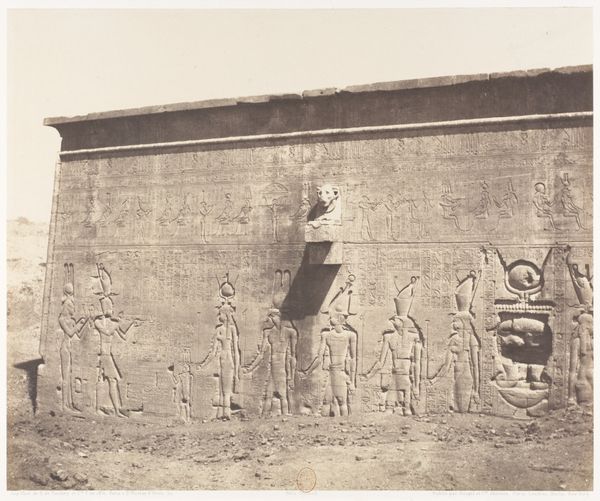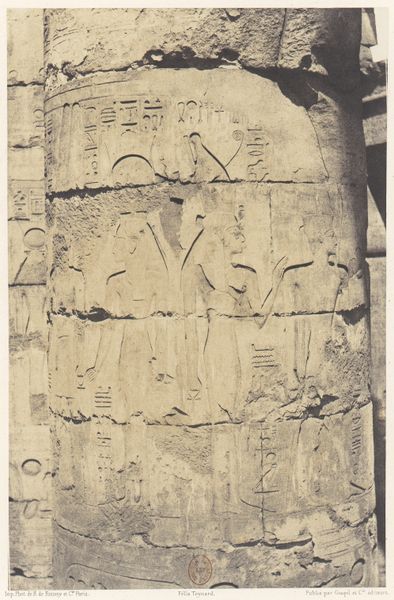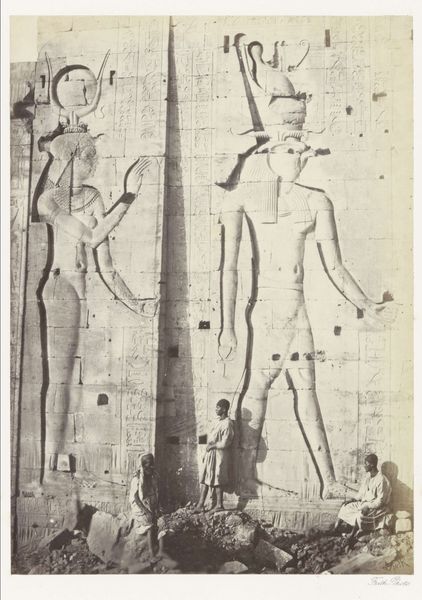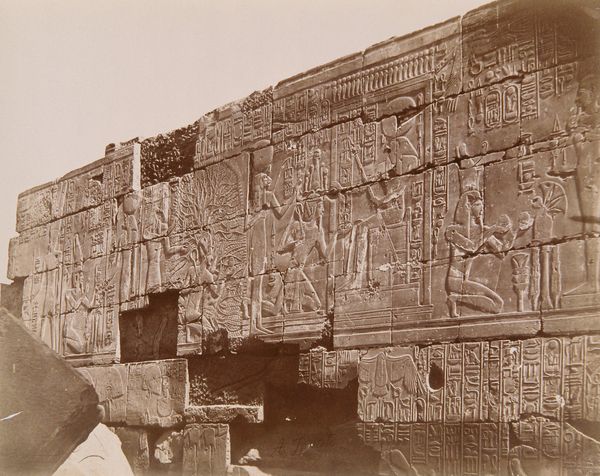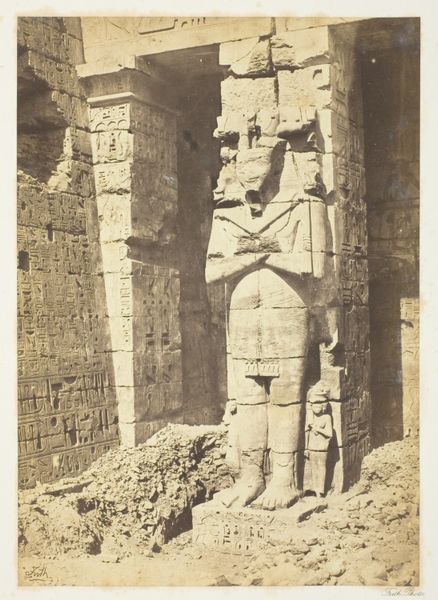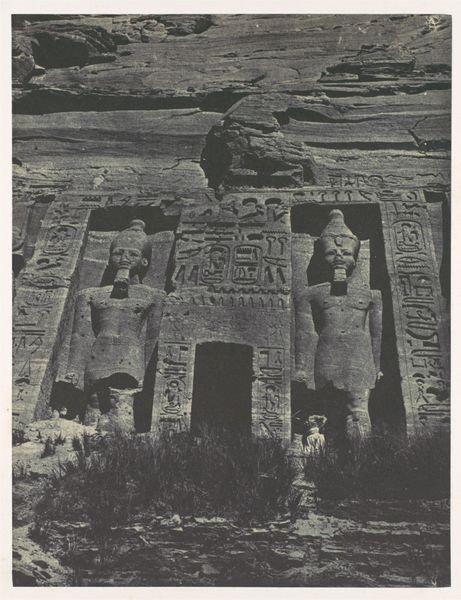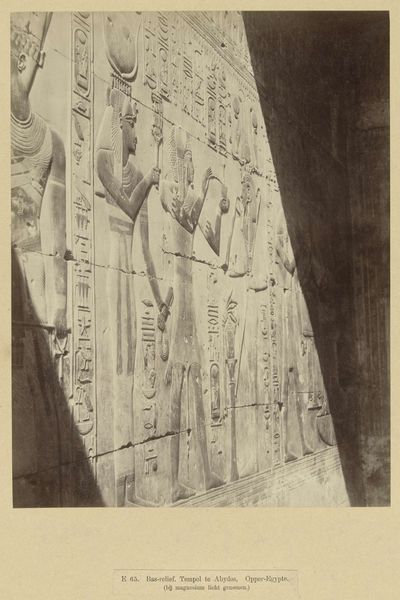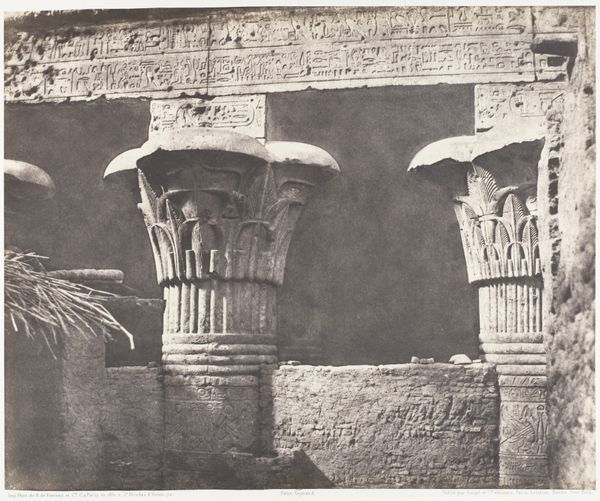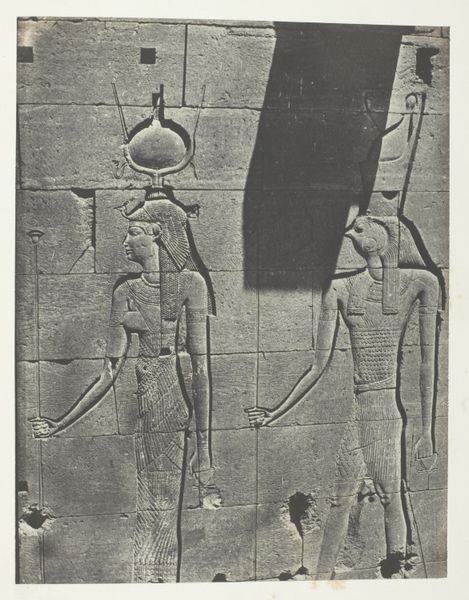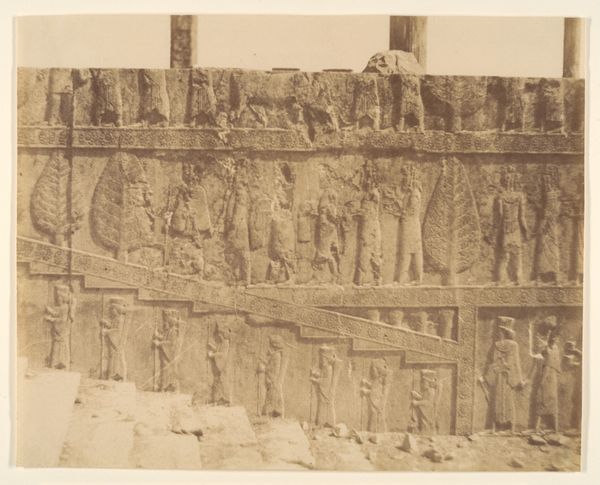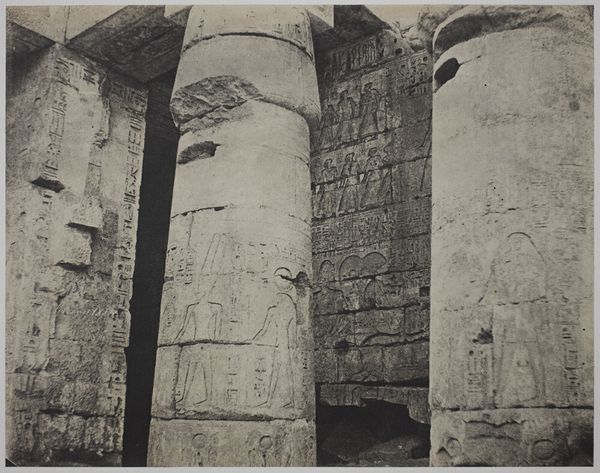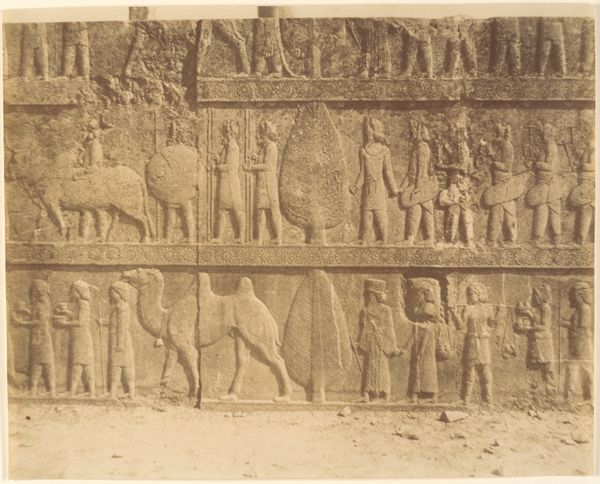
Ile de Fîleh (Philæ), Deuxième Pylône - Partie Orientale Vue de la Plateforme Inférieure du Premier Pylône, du Point G 1851 - 1852
0:00
0:00
photography, architecture
#
ancient-egyptian-art
#
photography
#
ancient-mediterranean
#
history-painting
#
architecture
Dimensions: 30.2 x 23.4 cm. (11 7/8 x 9 3/16 in.)
Copyright: Public Domain
Curator: This photograph by Félix Teynard, taken between 1851 and 1852, shows the island of Philae, specifically the second pylon's eastern side as viewed from the first pylon’s lower platform. It's a fascinating look at a critical historical site through the lens of early photography. Editor: It’s hauntingly beautiful. There’s this sense of immense age and the way the light falls almost obscures, but also highlights the relief carvings…you can feel the weight of history pressing down. Curator: Absolutely. Teynard was part of a French government-sponsored mission to document Egypt, and these photographs served as a record of the region's ancient monuments. What's remarkable is how photography at the time shaped Western perceptions of ancient Egyptian civilization. Editor: It's impossible to ignore that this isn't just an objective document. It represents a very particular, colonial gaze upon a culture, that was subsequently filtered through exhibitions and publications in Europe. How do you think these early photographs impacted the reception and understanding of ancient Egypt back then? Curator: Hugely. They offered a kind of "authentic" view, supposedly free of artistic interpretation. Yet, choices in composition, lighting, and subject all frame that vision. In this image, Teynard focuses on the grand scale and intricate details of the pylon, conveying a sense of majesty but also the monumentality of the power structures that built it. Editor: Which for me speaks to issues of preservation and cultural ownership that are so pressing today. We’re looking at a scene which has undoubtedly changed profoundly since Teynard captured it, and its accessibility was then largely limited to Western scholars. The implications are that who controls the narrative also, ultimately, controls the image and the physical place itself. Curator: Indeed. Photography granted access but also reinforced existing power dynamics and biases, further complicating our understanding of ancient societies. Editor: Looking at this today pushes me to question the narratives surrounding the past and challenge who gets to write history. Curator: And for me it serves as a stark reminder of the complex relationship between art, representation, and power. The act of observation is never truly neutral.
Comments
No comments
Be the first to comment and join the conversation on the ultimate creative platform.
